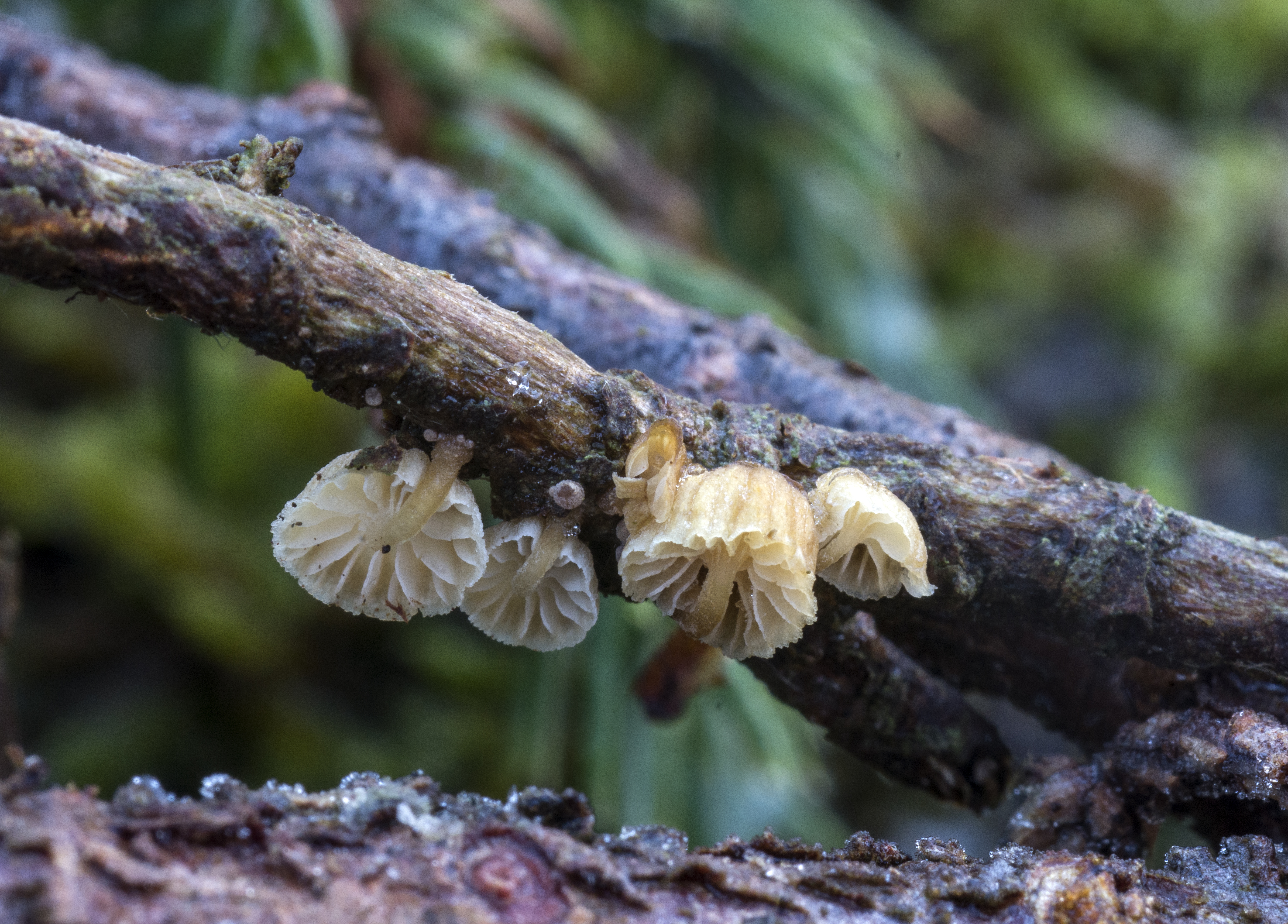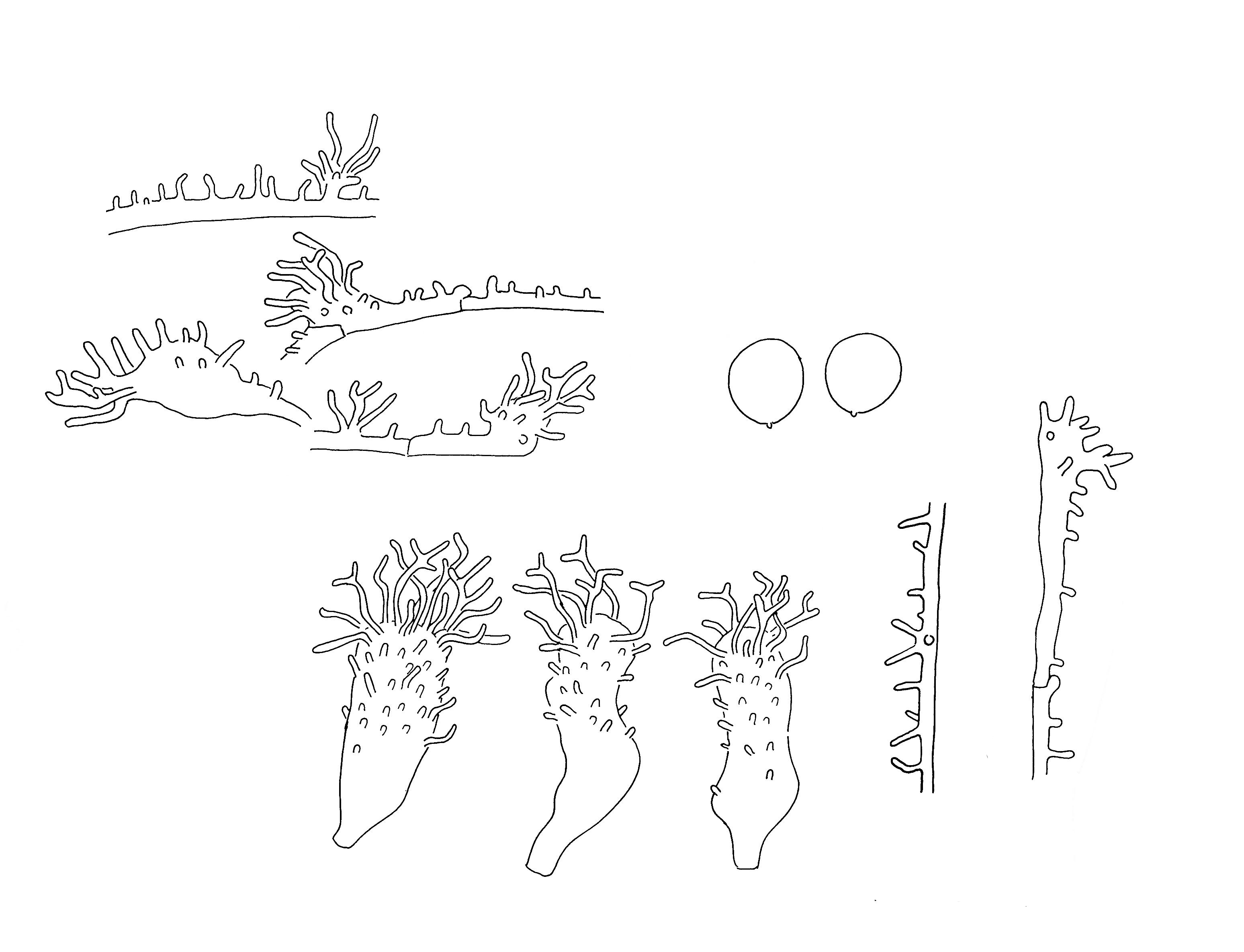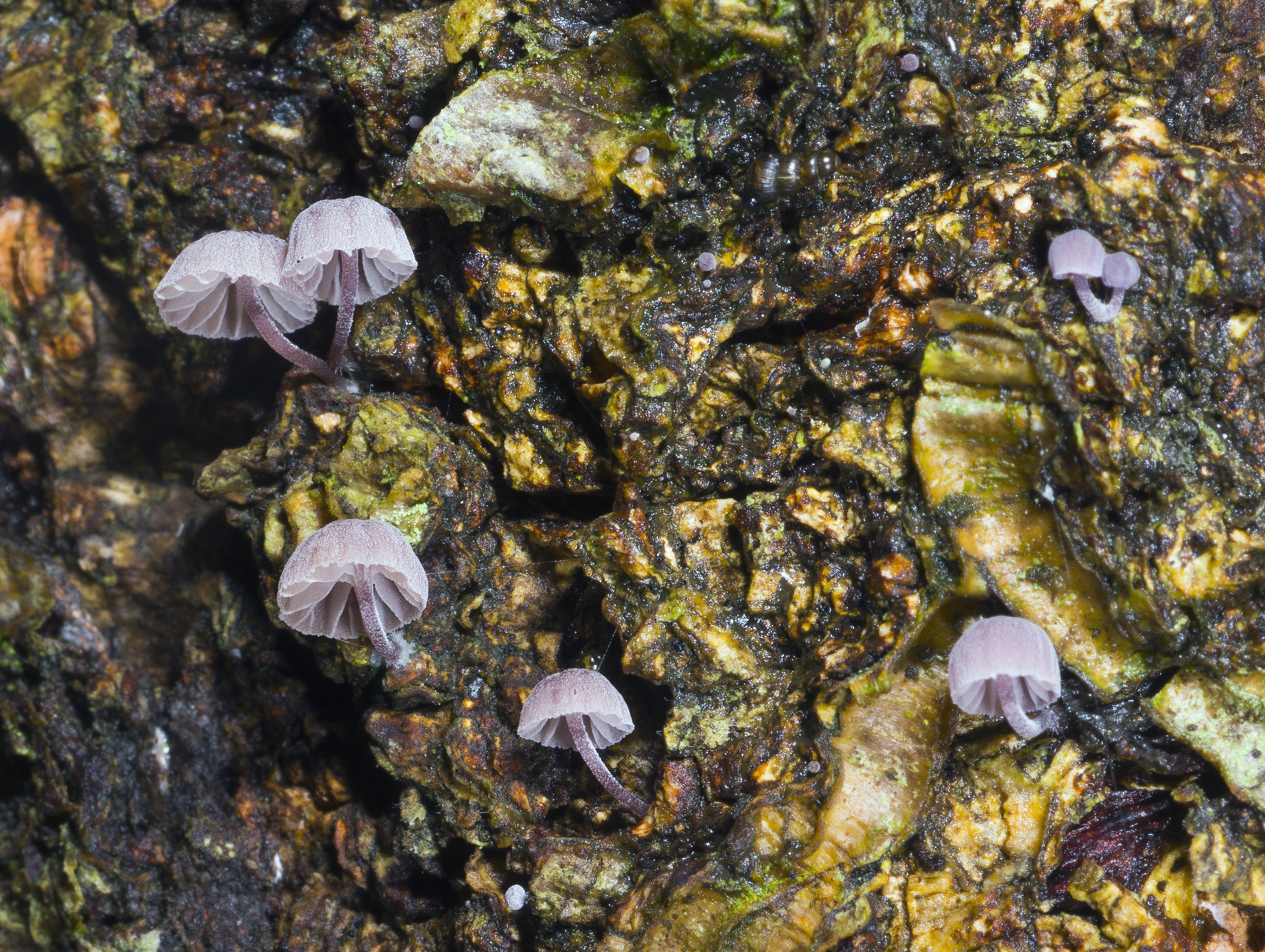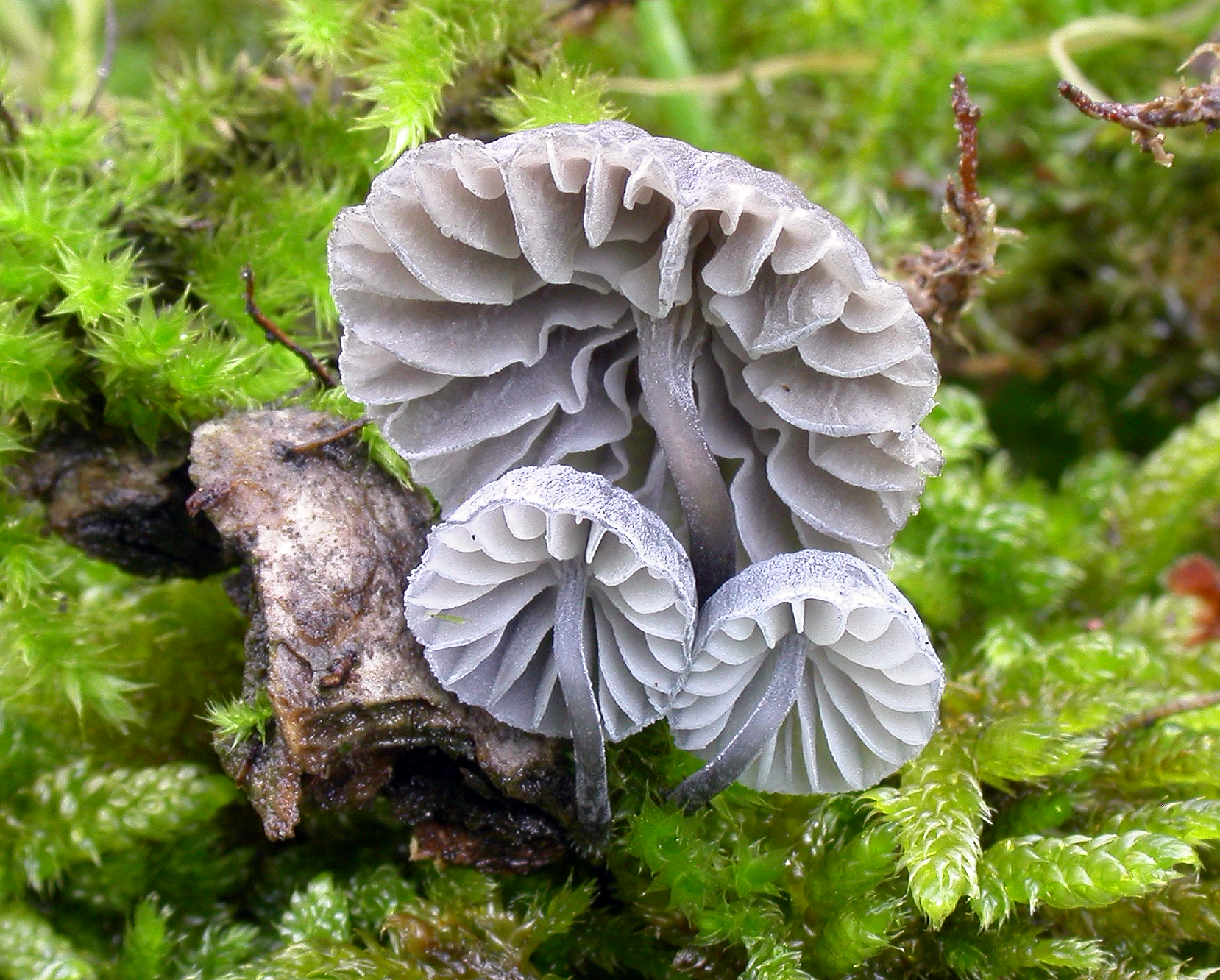Mycena juniperina
Mycena juniperina
Description
Hyphae of the pileipellis, spores, cheilocystidia, hyphae of the cortical layer of the stem with caulocystidium.
Cap 2.5-8 mm across, hemispherical to parabolical, finally convex, occasionally somewhat depressed or papillate, conspicuously sulcate, pruinose, white-puberulous or flocculose, pale brown or yellowish brown, often darker in the centre, with the margin paler to white. Gills (7-) 10-12 reaching the stem, broadly adnate with a decurrent tooth, sometimes decurrent far down the stem, pale yellowish grey or beige with the edge white-pruinose. Stem 3 - 5 x c. 0.5 mm, cylindrical, cartilaginous, fistulose, pruinose to puberulous, beige to pale brown, the base attached to the substratum with a patch of radiating, fine whitish fibrils. Odour absent to somewhat acidulous. Taste mild. Basidia 33-40 x 11-13.5 um, clavate, 4-spored, with sterigmata up to 8 um long. Spores 8.8-12.3 x 8.1-10.5 um, Q = 1.0-1.3, Qav ˜1.1, globose to subglobose, amyloid. Cheilocystidia 22-40 x 7-11.5 um, forming a sterile band, clavate, covered with unevenly spaced, simple to branched, curved to tortuous, often irregularly shaped excrescences, 2-23 x 0.7-1.5 um. Pleurocystidia absent. Lamellar trama dextrinoid. Hyphae of the pileipellis 1.8-11.5 um wide, with cylindrical, often curved, simple to branched excrescences which may grow to coralloid masses. Hyphae of the cortical layer of the stem 1.5-3.8 um wide, with cylindrical excrescences 1-6 x 1.5 um, terminal cells abundant, 23-43 um long, clavate, variously diverticulate. Clamps present in all tissues.
Ecology and distribution
Scattered or in small groups on (sometimes moss covered) bark of living Juniperus. Early autumn to winter (mild periods). Rare in Norway. Found a few places near the coastline. Probably overlooked, and locally regular and quite common.



